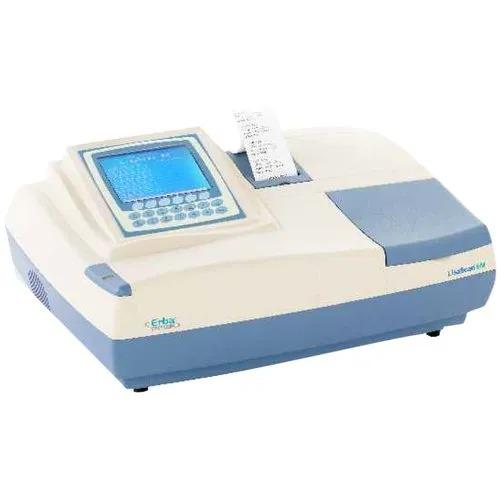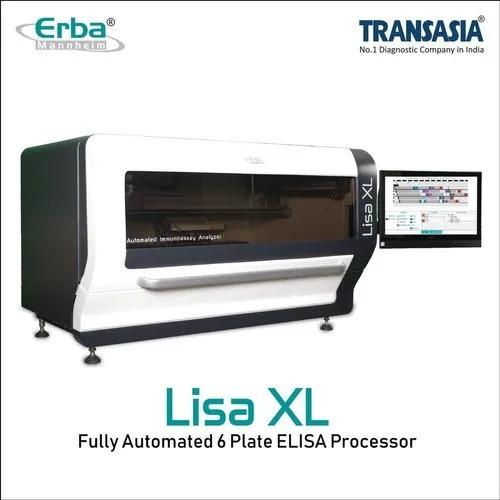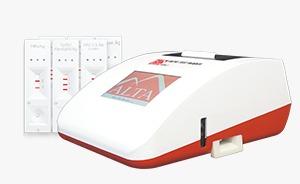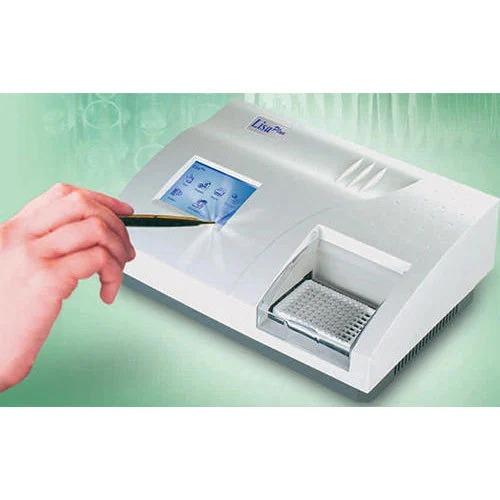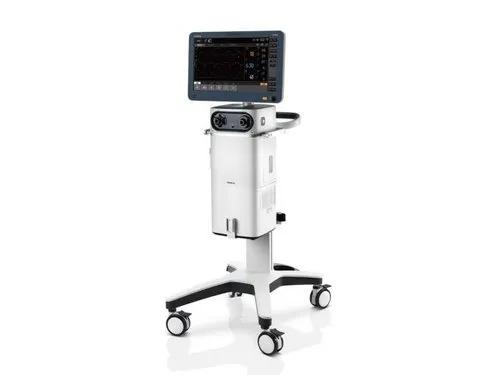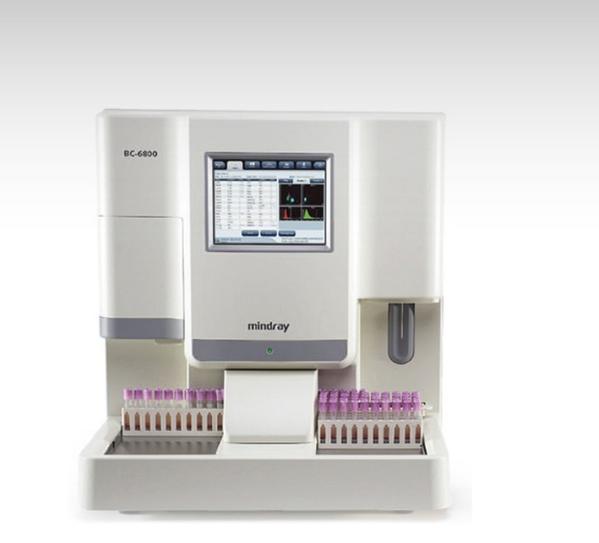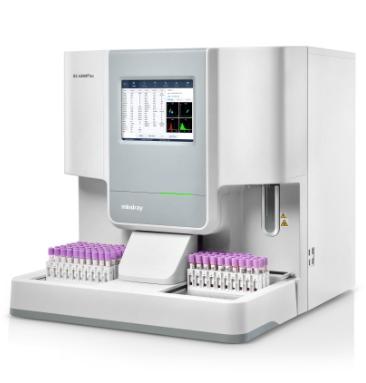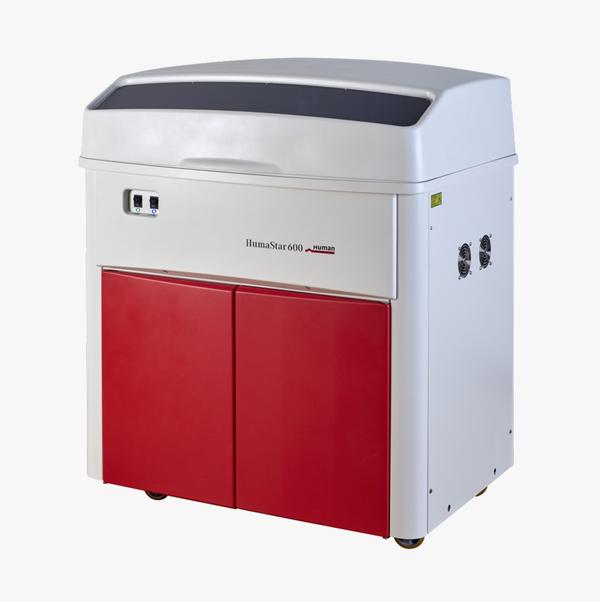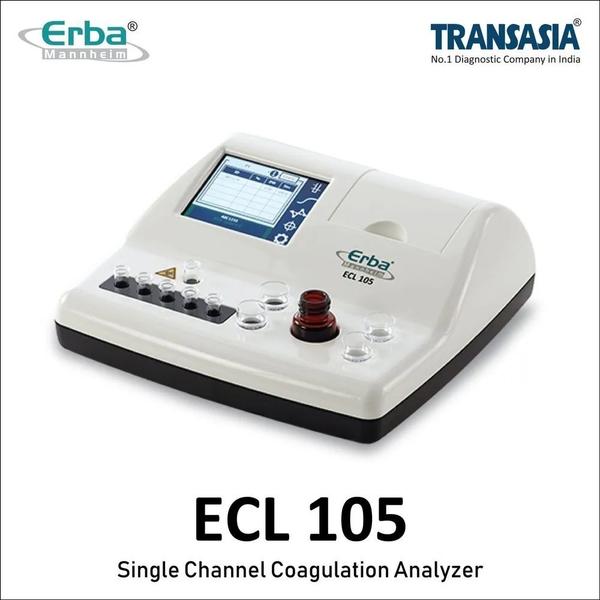Product Description: The LisaScan EM Microplate Reader is an economical, compact and versatile 8 channel ELISA reader which can be adapted to various ELISA applications. It is India’s largest selling automated microplate ELISA reader Product Features: Wavelength Range: 400 to 750nm with a dynamic measurement range of 0.0 to 4.0 O.D 100 user-programmable test storage Inbuilt thermal printer for reports & graphs Auto self-check on start-up & external printer connectivity Compatible to various plate geometrics-96 well microplates ( Flat, U & V bottom) Wavelength selection: Monochromatic, bi-chromatic & multi-chromatic* Reading time 8 sec. for single wavelength using 8-channel optics User-friendly inbuilt operation software with 7000 sample test results storage User interface: High Resolution LCD display with 20 Keys Rugged waterproof & membrane panel Computer linked ELISA data management software - Eli-LIMS* CE marked Inbuilt shaking facility,Three Linear Speeds - Low, Medium and Fast Reports can be printed using internal thermal or external printer No need of manual calculations and documentation Documentation ease – Reports can even be stored using optional Eli-LIMS software Computer can be connected Extensive ELISA data management Product Applications: ELISA System type: Open System Plate types: 96 well plates Wells Type: U, V and Flat bottom wells Operating Modes: Absorbance Quantitative Qualitative Semi-Quantitative Kinetic Mode Measurement Modes: Continuous / Step Shaking Modes: Three Linear Speeds - Low, Medium and Fast. Time duration can be set Wavelength Selection: Monochromatic Bi-Chromatic Multi-Chromatic* (Maximum 4) Calculation Modes: Non-linear Standard Cut-off Index Formula Column Subtraction Linear Regression Point to Point Cubic Spline Linear – Log Blank Options: Blank, Control, Assay Validation equations Against Air, Well Plate, Column, Column-mean Row, Row mean Number of programmable standards / calibrators: Up to 10 standards /test Storage/ display/ printing of multi standard curves and cut-off equations for all parameters Test Programs: 100 totally “open” Test Programs Photometer: Measuring system: 8-Channel optical system Lamp Source: Tungsten Halogen with Lamp saver function Wavelength Range: 400 to 750 nm Standard Filters: 405 nm, 450 nm, 492 nm, 630 nm (Optional two filters 578 nm, 700 nm), 10 nm Band Pass Dynamic Range: 0.0 ~4.0 OD Photometric accuracy: < 1% at 2.5 OD at 450 nm Photometric resolution: 0.001 OD Linearity: <1% at 2.5 OD at 450 nm Measurement Time: SPEED : 8 Seconds single wavelength NORMAL : 17 Seconds single wavelength Display: High resolution Graphics LCD 320x240 pixels, LED Backlight, View area: 120x92 mm Keyboard: Rugged waterproof & membrane panel PC Communication: USB Based Protocol compatible with Eli-LIMS and TNW Built-in Thermal Printer: Built in High resolution, 384 dots per line, thermal Type with full graphics facility printer and option for connecting External Parallel Printer (or USB Printer using External Adaptor). Computer interfacing Software: Windows Based Software Eli-LIMS with data managemenOptional Windows Based Software with data management capabilities to store patient results, store/display calibration curve /QC curves. Reports on internal and external printers: Report generation for last 7000 Sample’s is viewed/printed/stored. Lab name in Print-out Lab name in Display Collated reports Print-out of Normal Range along with the result (on external printer only). Graphs can be printed on Thermal Printer Sorted by: Date I.D. Both by Date & I.D. Test Plate ID Online Help: At each step on-line help in each menu. Beeps and online instructions on erroneous entry. Special HELP key on keypad. Operating Temperature: 20˚ C to 40˚ C Storage Temperature: -10˚ C to 50˚ C Humidity: Max. 80% RH, non- condensing Power Supply: 16 V - 24.5 V DC using External Auto ranging SMPS adapter 115/230VAC ±10%, 50/60Hz., Max. 90 Watt. (CE & UL certified) Dimension: 502 mm X 369 mm X 216 mm Weight: 7 Kg
Send Message